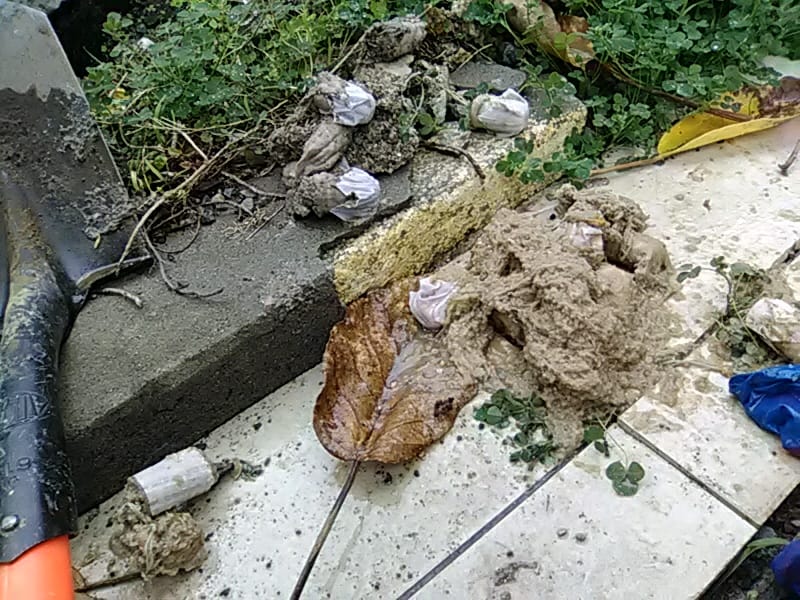Flushing a used tampon seems like the most convenient course of action – it’s totally mess free and you won’t have to go looking for a nearby rubbish bin. However, in this case, the easiest option isn’t the best.
It’s not a secret that flushing tampons down the loo can clog up the plumbing system and harm the environment. Even tampon brands have these warnings explicitly written on their product packaging.
The problem with flushing tampons
Tampons are designed to be super absorbent. Once they go down the drain, they absorb all the water they can hold and expand like crazy. In fact, they can expand up to ten times their original size. And since they cannot be processed by wastewater treatment facilities, drains are bound to get clogged up by years’ worth of used tampons. Need proof? Have a look at what we found on our recent drain unblocking and CCTV drain inspection work.
Sure they are ‘flushable’ in the sense that they go down the drain without any problems. But the truth is tampons don’t break down in seconds like tissue paper does. Even the biodegradable options take months to break down, so they remain practically intact while they’re making their way through the pipes or the sewage treatment system.
When all those tampons accumulate in the pipes, they can cause blockage which is both problematic and costly. This costs utilities billions of dollars in repair and maintenance costs each year. And you can bet it will cost you a fortune if it happens on your property. If you have a septic tank, the tampons will sink to the bottom and impede the tank’s ability to function.
The result? Blocked drains can cause flooding, health risks and damage to property. It can be very costly to fix these problems.
Aside from causing blockage, flushed tampons can get into clean water sources when the sewer pipes back up and the wastewater overflows into our creeks, rivers and streams. In some instances, they bypass sewage treatment facilities altogether and end up directly in waterways. They not only become an eyesore but can also harm wildlife. In fact, thousands of marine animals and seabirds die from ingestion of marine litter, which include tampons.
Now, if you think flushing tampons down the drain instead of throwing it in the bin is keeping them away from landfills, hold that thought. Any waste that gets caught in the sewage are eventually strained out and sent to – you guessed it – a landfill. So that’s basically just taking the longer route.
What can you do about it?
For starters, follow the 3P’s rule, which is to flush only pee, poop and paper (sparingly). Wrap your used tampon in tissue and throw it in the rubbish bin where it belongs. It’s that simple.
How about the ones that are already down the drain? If water from your pipes is starting to back up or if your drains aren’t working as well as they should, call our team for a drain unblocking and CCTV survey. During inspection, we’ll send a tiny camera down your pipes to locate the source of the blockage before attempting any treatment. This saves a great deal of your time and money, since we can provide the right solution based on concrete evidence and diagnosis. It also means we won’t have to go digging around in your property to find the problem.
For more information, don’t hesitate to call us on 0800 DRAINLAYER (0800 372 465).






